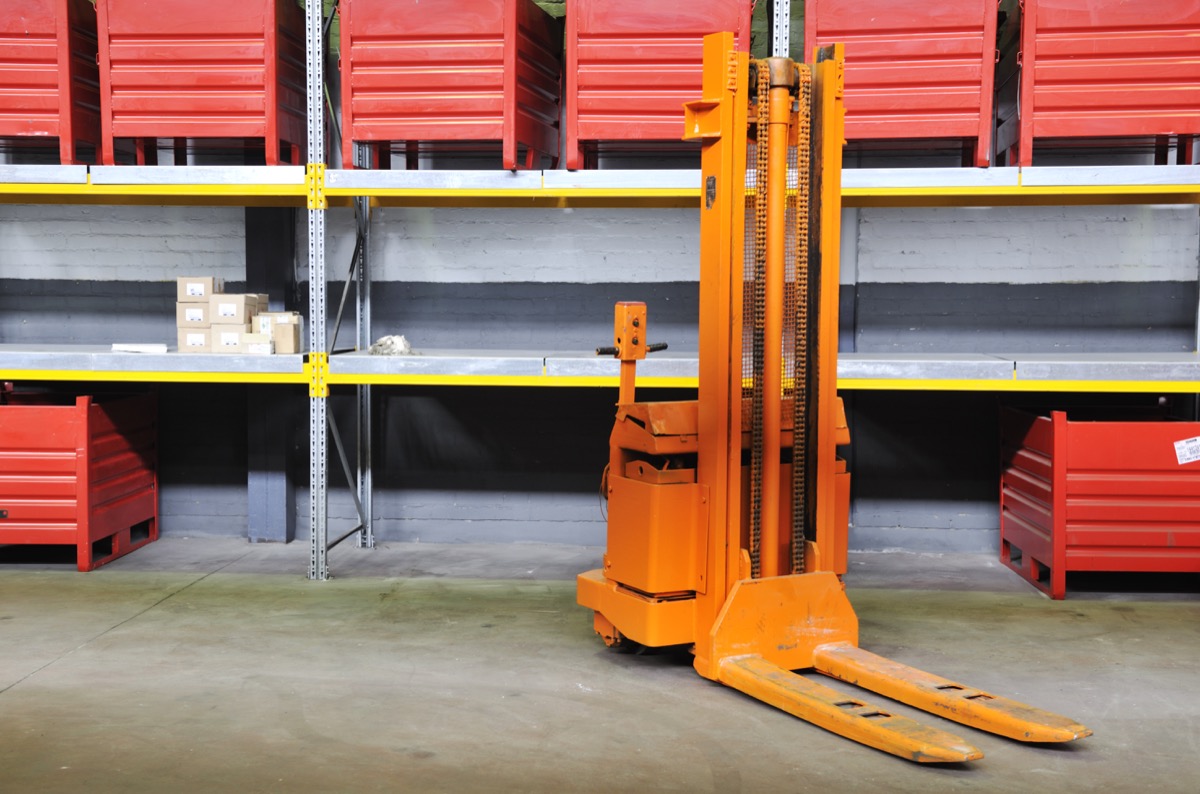Chart of Accounts: Accuracy Vs. Comparability
Feb 17, 2016
I recently met with a business owner who is having issues determining his cash flow. He is worried if he pays a payable for $8,000 will he end up $8,000 short the following weeks payroll. He does not have a lot of comfort or tools to aid in his decision making. I offered the idea of a cash flow model which could help relieve some of his concerns. Typically, a cash flow model is an Excel spreadsheet built specifically to a client’s needs. It can function as a budget or a tool to aid in cash flow and overall business decisions. In this case, I suggested we would use the model as a budget and cash flow aid.
 This client has several divisions within the business and in order to track each, he has created separate accounts. He admitted needing additional accounts to track each division, as a result he is constantly changing his chart of accounts. In fact, just as I began creating the model, he asked me to hold off change while he modified the chart of accounts. In my opinion, the use of separate accounts for each division is not nearly as useful as other alternatives. Instead, it proves to be difficult and time-consuming to run an income statement detailing specific accounts. Such a process would involve creating several filters, or manipulating data in Excel. If he was to utilize classes or another identifiable method for each category, he could run an income statement by class. This would only require a few clicks. To me, this would be more valuable as you could then determine your profit margin and net profit by category.
This client has several divisions within the business and in order to track each, he has created separate accounts. He admitted needing additional accounts to track each division, as a result he is constantly changing his chart of accounts. In fact, just as I began creating the model, he asked me to hold off change while he modified the chart of accounts. In my opinion, the use of separate accounts for each division is not nearly as useful as other alternatives. Instead, it proves to be difficult and time-consuming to run an income statement detailing specific accounts. Such a process would involve creating several filters, or manipulating data in Excel. If he was to utilize classes or another identifiable method for each category, he could run an income statement by class. This would only require a few clicks. To me, this would be more valuable as you could then determine your profit margin and net profit by category.
In addition, I advise against constantly change your chart of accounts because you lose comparability. If you are constantly changing the way you record an income or expense item, you no longer have the ability observe trends over a period of time. Older accounts no longer in use will have old information and a new account will only have the most current. Consistency in account usage allows for comparisons which aid in business decision making.
I am not advocating never making modifications to your chart of accounts or never considering other methods for accounting for items. If what you are currently doing is not functions, then it is certainly time to consider a review. Take your time to set up an efficient system to avoid possible issues in the future. Furthermore, accurate overhead allocations and correctly classified direct and indirect expenses are critical to your success. However, that is a blog topic in its own right!
Do you modify your chart of accounts frequently? Have you considered what it may look like if you did not? What kinds of decisions can you now make that you could not before?
Categories: Cost Accounting
Outdated Cost System Impacting Profitability
Feb 11, 2016
A few weeks ago, I met with a potential new client regarding a costing matter related to their manufacturing company. The company had been in business for number of years and was profitable, but not nearly to the extent the owner perceived possible. He believed the costing system being used was providing inaccurate information and could be significantly improved upon for both costing information and overall control of the shop.
As we went over his costing system, an Excel-based model, it became clear in order to determine product cost, management was making a series of “best guesses”.
 The company had a dozen cost centers each doing a different type of operation and each requiring different support both in labor and other expenses; such as, utilities, indirect labor, and quality. The actual usage of those resources were incurred disproportionately among the various cost centers. The owner realized the best method of operation was the development of rates per hour of production for each of the cost centers. This would then be applied to each of the parts based on the speed at which they crossed a given cost center.
The company had a dozen cost centers each doing a different type of operation and each requiring different support both in labor and other expenses; such as, utilities, indirect labor, and quality. The actual usage of those resources were incurred disproportionately among the various cost centers. The owner realized the best method of operation was the development of rates per hour of production for each of the cost centers. This would then be applied to each of the parts based on the speed at which they crossed a given cost center.
The owner used his industry knowledge, past experience, and best guess to set the machine rates based on estimates without any specific identification or knowledge of what his operation may actually be incurring. Each of the dozen costing centers had costing rates assigned, but all without any regard to a method of allocating costs and actually computing rates.
The other component the owner had estimated was the speed at which the parts were being produced. Again, based on his industry knowledge and his relative understanding of how the parts were processed, he developed estimated rates of production which were applied against the estimated hourly cost to produce product cost. These product costs were then used to determine profitability of jobs, set selling prices, or be used for overall profitability of customer, process, part or sales person. Needless to say, the results were unpredictable at best, and in many cases, absolutely misleading related to the actual costs being incurred on the floor.
The owner recognized the inaccuracies and was anxious to get started on a new system where the costs incurred by each process could be specifically identified. This would allow for the various rates of production by each of the parts to be more carefully recorded and compared to early results. This comparison would ensure the costs would be as accurate as historical records and the actual cost per hour of each the cost centers would accurately and fully recover the cost associated with that center.
The owner envisioned a variety of sales and marketing tools resulting from knowing accurate product cost and how that could be used to help position the company with potential customers as a preferred supplier. His concern with the existing method was that some products were being costed far above what they actually cost and others were being costed far below. The end result, some jobs were awarded which would never result in profitable operations and in the other case, jobs were not even given consideration due to competitive quotes at far lower price.. We ended our conversation with an agreement to begin the process of identifying cost centers and production rates, so that we could begin the process of building a new, more efficient cost model. One that would also supply a variance analysis, which would help improve the efficiency of the entire manufacturing operation.
Categories: Cost Accounting
Testing Your Costing Data
Feb 10, 2016
When is the last time you took leftovers out of the fridge and conducted the ever so popular “smell test”? Believe it or not, we conduct the “smell test” on a daily basis. We may smell a baby to determine if a diaper change is necessary, or you may smell your child’s breath to see if they truly brushed their teeth like the said. While this is a method we use to determine if something “passes the test,” have you ever considered areas of life where we conduct (not so literal) smell tests?
 For example, when educating my 8-year-old on subtraction, I explain the answer cannot be bigger than the number from which you are subtracting. The number can be the same, if subtracting zero, or smaller. However, if the end result is larger than the number subtracted, there is an error. To me, this is a great example of applying the “smell test” to a given scenario.
For example, when educating my 8-year-old on subtraction, I explain the answer cannot be bigger than the number from which you are subtracting. The number can be the same, if subtracting zero, or smaller. However, if the end result is larger than the number subtracted, there is an error. To me, this is a great example of applying the “smell test” to a given scenario.
Are there areas of your personal or professional life where you knowingly applied such a test? What are they?
I am working with a client who would like to update their cost system. Several years ago, when we established the system, we did not have a lot of actual data to build from or support the model. Over time we have produced more and more extremely valuable real-time data. However, we have never linked our cost model with this data for validation. Counter-intuitive processes have been occurring and as a result, management has asked us to determine the cause.
We have determined part of the issue involves assumptions being built upon years of assumptions. Actual data from the past year was not compared to see how close the model delivered. In addition, last year’s actual information was not utilized to develop the current model with the current year’s assumptions. The future was built upon years and years of assumptions, which most certainly resulted in numerous inaccuracies. Now irrelevant information has been developed and used.
Upon being hired, we recognized the current methods were not passing the “smell test.” We hired 24 additional employees and our sales were expected to increase by 10%, yet our model told us labor hours would be 30% less than the prior year! Management said they have become more efficient and plan to develop even greater efficiencies in the coming year, but wow!
It is critical to take the time to step back and evaluate your data. Does this make really sense? Is this the end result I anticipated? If not, then why not? You can build your own “smell tests” into your model which force you to consider key points for operational and financial growth. Use formulas to help you recognize areas of concern.
Categories: Cost Accounting
Communication Among Manufacturing Departments
Feb 05, 2016
Today, I visited a client who has concerns about their costs and whether or not they are driving decision making more than should be allowed. More importantly, the client is even more concerned about the accuracy of their costs. Management has assumed because they had outdated information, their costs were automatically inaccurate. After careful review, we determined this is not the case.
 While meeting with the scheduling manager, we learned there is a substantial amount of valuable information available. The manager is tracking the efficiency and average run times of all machines, people, and parts. He knows, in real time, if a standard is inaccurate and updates the information accordingly.
While meeting with the scheduling manager, we learned there is a substantial amount of valuable information available. The manager is tracking the efficiency and average run times of all machines, people, and parts. He knows, in real time, if a standard is inaccurate and updates the information accordingly.
To be honest, the information available is some of the best I’ve seen. Unfortunately, the controller was not aware this information being noted and was easily accessible. Since our firm is now engaged in the process, we will make certain the two communicate.
Clearly, the scheduling department did not realize the data they collected could worthwhile for the accounting department. In any manufacturing business, it is critical to understand what each department does and what information they have on hand to help make the business run more efficiently. It is the job of a controller to be knowledgeable about the financial data in each department. If you are a controller, make it a point to engage each department on a regular basis. Monthly, or even quarterly reviews or meetings can make a significant impact and make you job that much easier. Communicating effectively and sharing information can ultimately make or break a business.
Categories: Cost Accounting
Overhead Calculations and Inventory
Feb 01, 2016
One question we often hear is, who must include overhead in their inventory, how much should be included, and how should it be calculated? There are three important factors associated with overhead and inventory which must be considered before answering these questions. One, the Generally Accepted Accounting Principles (GAAP) which require overhead to be included in inventory. Two, the federal income tax rules which require overhead to be included in inventory. Three, management reporting considerations which may or may not include inventory in the product cost.
These three factors are completely separate and in many cases, are unrelated. In addition, each may have completely varying objective which must be considered before the question of how much overhead in inventory can be answered.
 For the consideration of GAAP, there is an entire section of new Generally Accepted Accounting Principles devoted strictly to how much overhead should be included in inventory. The rules are rather general which provides the preparer of the financial statements latitude in determining exact methods of computation and amounts. The rules are specific with regard to the overhead being included. The inventory will be misstated if the type of business requires the inclusion of overhead and is not completed. This rule has far-reaching implications in many business situations, particularly those where a buyer is purchasing a certain amount of inventory and a seller is selling a certain amount of inventory in a merger or acquisition transaction. The accuracy of the inventory can be crucial to determining the correct price and inventory value not in accordance with GAAP, which can have a large negative impact depending on the size of the misstatement and when it is discovered.
For the consideration of GAAP, there is an entire section of new Generally Accepted Accounting Principles devoted strictly to how much overhead should be included in inventory. The rules are rather general which provides the preparer of the financial statements latitude in determining exact methods of computation and amounts. The rules are specific with regard to the overhead being included. The inventory will be misstated if the type of business requires the inclusion of overhead and is not completed. This rule has far-reaching implications in many business situations, particularly those where a buyer is purchasing a certain amount of inventory and a seller is selling a certain amount of inventory in a merger or acquisition transaction. The accuracy of the inventory can be crucial to determining the correct price and inventory value not in accordance with GAAP, which can have a large negative impact depending on the size of the misstatement and when it is discovered.
The second consideration involves federal income tax rules. Many years ago, the Internal Revenue Service developed code section 471 which has to do with the inclusion of overhead in inventory for tax purposes. The IRS was specific about manufacturers which meet certain criteria being required to allocate a certain amount of overhead to inventory. The regulations did, in fact, provide specific guidance as to how this would be achieved. Code section 471 was the standard of tax accounting of overhead in inventory for many years until code section 263A was developed in the mid-80s. These new rules expanded the definition of who was required to include overhead into inventory and added certain elements of cost that must be included in the inventory calculation excluded from the 471 regulations. Code section 263A was not in replacement of 471, but rather was an addition to 471 should be considered by every manufacturing taxpayer and many distribution taxpayers. It has been my experience that IRS auditors are trained to look for the inclusion of 263A in manufacturing inventories and regularly do so as part of their normal auditing procedures associated with the manufacturer.
The last item of consideration associated with overhead inventory is related to management reporting. This consideration has little or no rules associated with it and is highly dependent on the specific need for the management information.
For instance, if management is attempting to use individual product cost for a make versus buy decision, then the cost of the product might exclude certain overheads which may normally be included in the inventory calculation. However, if management is requesting information associated with product profitability by customer or product type, then it may include overheads not included with inventory valuations. The specific nature of management information as it relates to product cost and especially overhead in inventory or overhead is in each case unique and dependent on the ultimate uses by the management team of the information. General rules and guidelines can sometimes develop misleading results and should be reconsidered every time there is a recalculation of product costs for management purposes.
Categories: Cost Accounting
